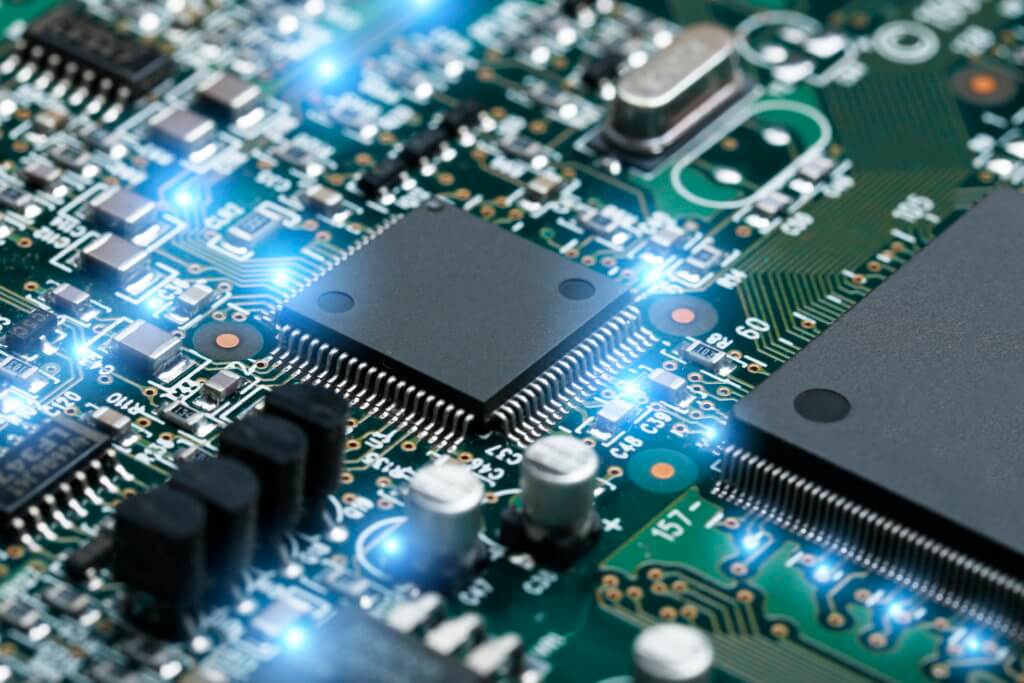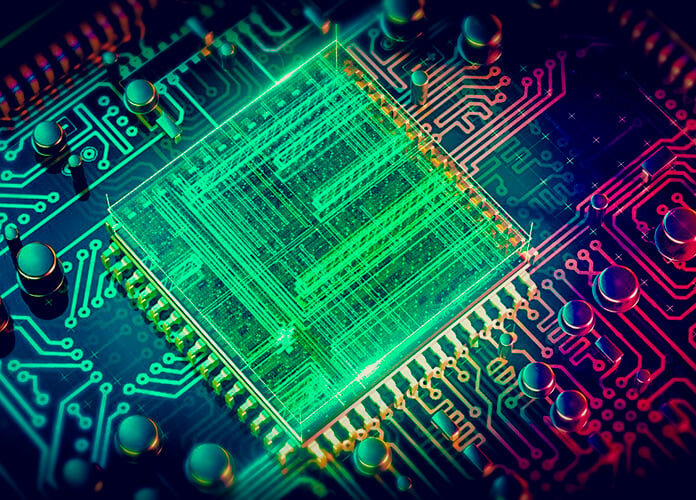Even if we have the impression that a computer does a lot of things, in reality, it has only one mission — it deals with information (hence the word ” computer “). In this article, we will be guiding you through Quantum computing and quantum physic basics.
Your computer stores information on your hard drive processes information with its processor (such as the page you’re reading or a movie you’re watching), and turns that information into sound (in your speakers) or in a picture (on your screen). Period.
This information manipulated by the computer has the characteristic of being coded in binary, that is, to say, with 0’s and 1’s. In other words, a computer reflects in binary. A computer memory is thus made up of billions of boxes containing either a 0 or a 1. Such a box is called a bit. To manipulate these bits, your computer is filled with small electronic components that work together and are called “logic gates”.
There is also an impression that computers can solve all the problems of the world because they are powerful and effective. And that’s wrong!
Researchers often encounter problems that their computers can not solve. So, they are looking for ways to make their computers more powerful. To make a computer more powerful, you have to:
- Increase its memory ( to store more information).
- Increase the number of transistors it has ( to process more information).
Unfortunately, there comes a time when adding memory and processor is not even enough to make the computer satisfactory.
But even the best supercomputers (giant computers, used by researchers) can be overworked by some problems that are decidedly too complicated. These classic computers are not made to solve these complex problems. They just do not “think” the right way.
These super-computers, as powerful as they are, are thus overwhelmed by certain problems. Hence, the idea of a quantum computer, that would work quite differently. The first theories of quantum computing were born in the 1980s, and use amazing properties of quantum physics.
Two Phenomena at the Heart of Quantum Computers
To understand how a quantum computer works, no mystery – you must already understand the basics of quantum physics. Let’s see 2 essential notions, as simply as possible.
Quantum Superposition
At the beginning of the 20th century, physicists realized that matter behaved strangely in the infinitely small. For example, a particle of an infinitely small object can be in an indeterminate state before any measurement.
One can make an analogy with a lottery ticket – a lottery ticket is either a winner or a loser. Once we look at the result of the draw on TV, we have the answer. But before the draw, this ticket was neither a winner nor a loser. It simply had a certain probability of being a winner and a certain probability of being a loser.
In the quantum world, all the characteristics of the particles can be subject to this indeterminacy. For example, the position of a quantum particle is uncertain – it is not at a point A or a point B, but only has a probability of being here or there during a measurement. Before the measurement, the particle is neither at point A nor at point B. On the other hand, after the measurement, the state of the particle is well defined — it is at point A or at point B.
This indetermination is an idea that was absolutely innovative for the physicists of the early twentieth century. Indeed, in classical physics, the state of an object is always defined.
Take the example of a flip-flop and imagine that you’re throwing a coin up. Before looking at the result, you know that there is a one in two chance that the coin falls on the tail and a chance of one in two that the coin falls on the head. Before making a measurement, you do not know what is its state, but it is well defined — either tail or head.
If the piece was quantum, it would be different — before looking, the piece would have an indefinite state, and it is the measure that would place it either in one state or the other.
In quantum mechanics, according to the superposition principle, the same quantum state can have several values for a certain observable quantity (spin, position, momentum, etc.)
Odd, right?
Attempting to explain quantum physics with everyday objects is a big problem, Schrödinger tried to explain this with his famous Schrödinger’s cat thought experiment (which you should definitely discover to better understand).

Quantum Entanglement
In quantum mechanics, the quantum entanglement is a phenomenon wherein two particles (or groups of particles) have quantum states dependent on each other regardless of the distance separating them. Such a state is said to be “entangled” because there are correlations between the observed physical properties of these distinct particles. Thus, two entangled objects O1 and O2 are not independent, even if they are separated by a great distance, and we must consider {O1 + O2 } as a single system.
This observation is at the heart of the philosophical discussions on the interpretation of quantum mechanics. It is contrary to the principle of local realism defined by Albert Einstein.
Entanglement is an amazing property of quantum physics. We can link two quantum objects that are a priori independent. For example, we can force them to be in opposite states at the moment of a measurement.
To illustrate this naively, imagine two bulbs, each in two different houses. By intertwining them, it would become possible to know the state of the first light bulb (on or off) by simply observing the second, because the two would be linked, entangled.
Why Quantum Computing Can Be Scary?
The main practical application that we are considering today for quantum computers is cryptography.
The cryptosystem, that is the most used today, to secure the transmission of our emails, our banking transactions, etc., is RSA. RSA encryption uses very large primes to secure the data. In other words, your navigation is secured by very complicated mathematical calculations.
To decode an RSA encoded message, an attacker must use a prime factor decomposition algorithm. The strength of the RSA is that these algorithms are quite slow, and even supercomputers can not decode in a reasonable amount of time.
However, there is a quantum algorithm ( the Shor algorithm ) that performs decompositions in prime numbers much faster than any conventional algorithm.
If the day came to implement Shor’s algorithm on a high-performance quantum computer, RSA encryption would not be safe. This would be one of the biggest upheavals that quantum physics has unleashed (and it has already traumatized a generation of physicists)!
Fortunately, the quantum theory could perhaps repair the harm it has created, thanks to quantum cryptography! This branch of quantum physics uses the amazing properties of the infinitely small to transmit messages safely.
Quantum computing is only in its infancy, the revolution is yet to come!



